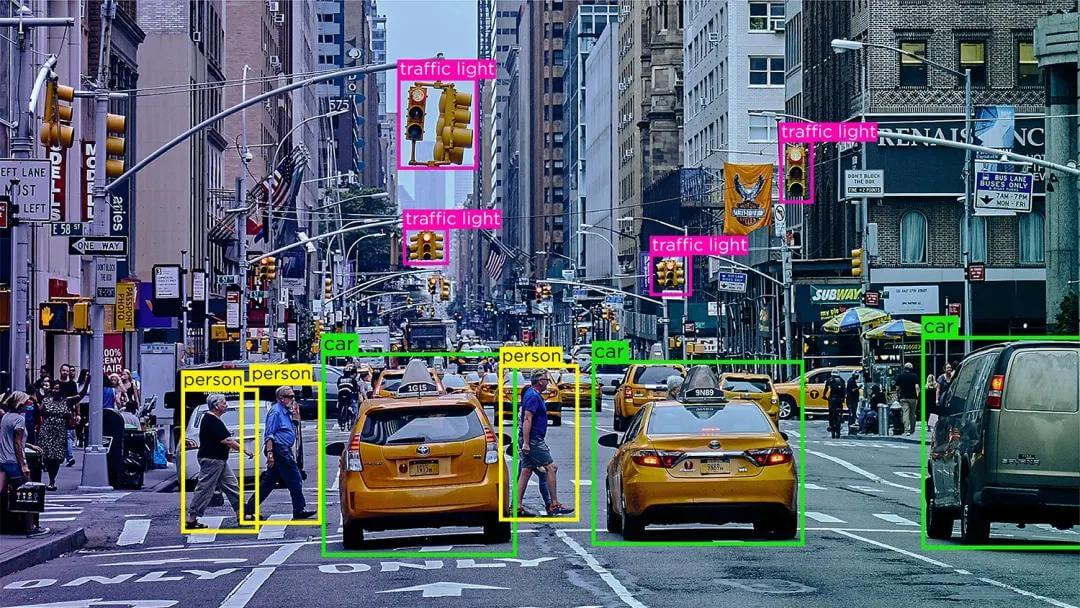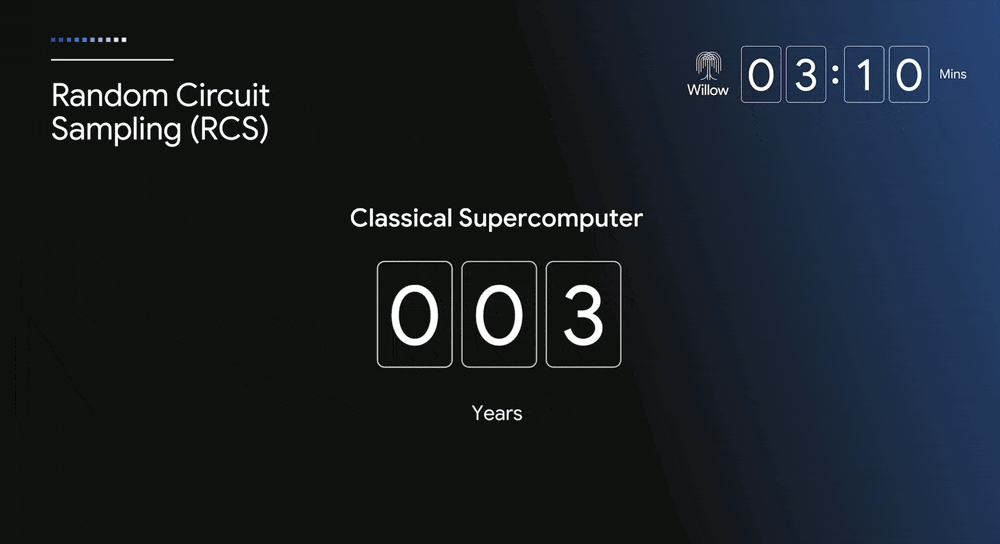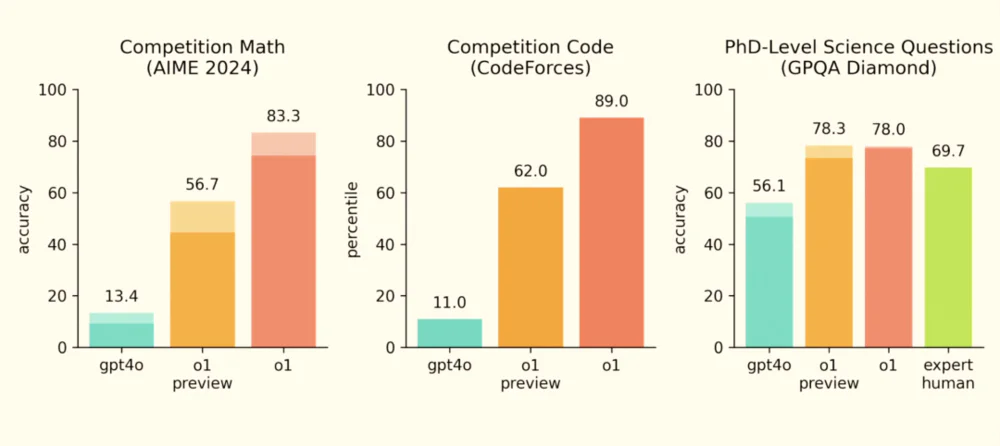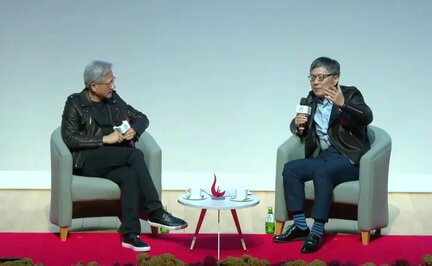As the year comes to a close, it’s time to reflect on the significant events of 2024.
In 2024, scientists achieved major breakthroughs in various fields: we left Earth to uncover secrets from the far side of the Moon, delved into cells to create detailed maps of the human body, and harnessed artificial intelligence to accelerate scientific discovery.
Let’s review these groundbreaking technological achievements:
Artificial Intelligence Becomes a Scientific Catalyst
In 2024, artificial intelligence (AI) “received” a Nobel Prize.
The Physics Prize was awarded to John Hopfield and Geoffrey Hinton for their pioneering work in artificial neural networks and machine learning.
The Chemistry Prize went to David Baker, Demis Hassabis, and John M. Jumper for their contributions to protein structure prediction. The AlphaFold model, developed under Hassabis and Jumper, achieved a revolutionary breakthrough by predicting protein structures with near-experimental accuracy.
These awards underscore how AI has evolved from a supporting tool to a vital force driving scientific discovery.
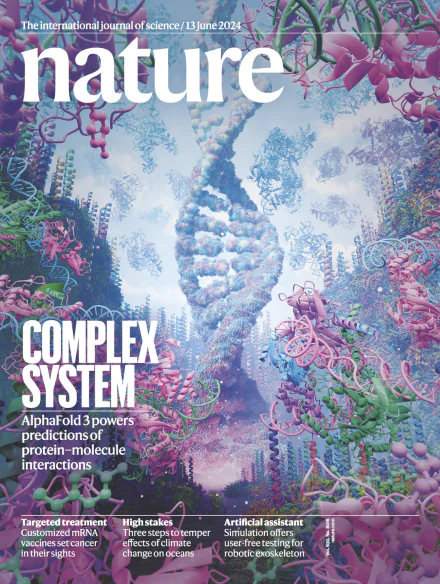
AlphaFold 3.0 Featured on Nature Cover
In June, the upgraded AlphaFold 3.0 was released. This version not only improved the accuracy of protein structure predictions but also extended its capabilities to DNA, RNA, and other biomolecules, enabling scientists to better understand the building blocks of life.
This technology has profound implications for drug development and disease research. For example, it can rapidly predict how drug molecules bind to target proteins, significantly enhancing screening efficiency. It also aids in vaccine and treatment development for infectious diseases.
Beyond biomedicine, AI also plays a crucial role in other scientific domains. In climate science, the AI model GraphCast improves predictions of weather changes and natural disasters. In experimental design, AI helps optimize research plans and increase efficiency. An analysis of 74.6 million scientific papers revealed that studies employing AI technology tend to garner more academic attention and citations.
From protein molecules in the lab to the shifting winds in the sky and the genetic sequences in drug research, AI is helping humanity explore all corners of the natural world. These advancements not only boost research efficiency but also provide new methods to tackle humanity’s most pressing challenges.
Chang’e 6 Brings Back Lunar Samples from the Far Side
In 2024, China’s Chang’e 6 spacecraft achieved a historic milestone: it collected samples from the far side of the Moon and successfully returned them to Earth.
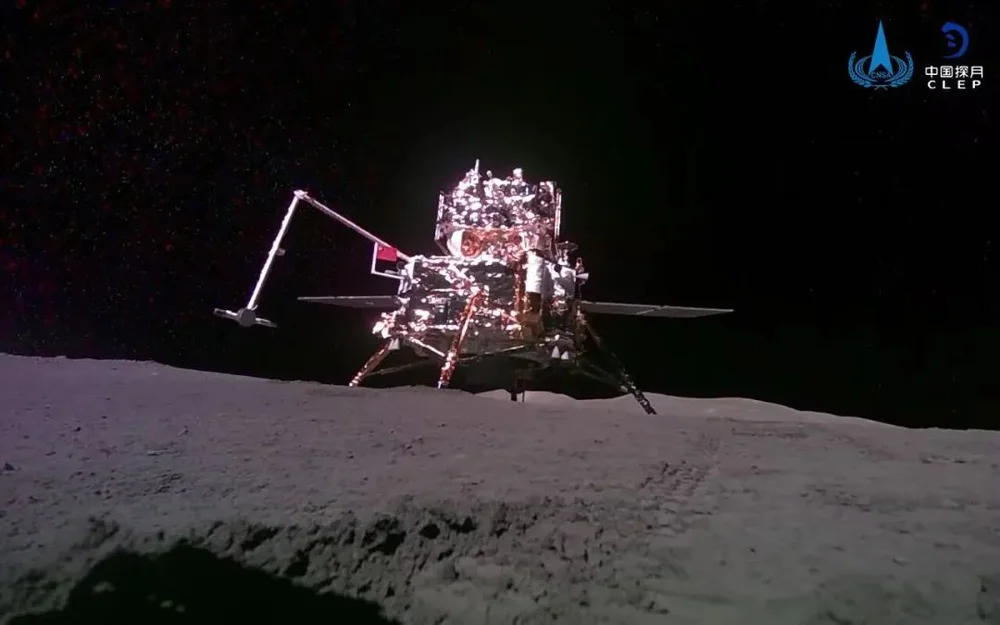
Gambar kerja pesawat pendarat Chang'e-6 dan pemasangan ascender di bahagian jauh bulan
On May 3, Chang’e 6 launched from the Wenchang Space Launch Center in Hainan, China. It landed on June 1 in the southern region of the Apollo Basin within the South Pole-Aitken Basin on the far side of the Moon. Using robotic arms and drilling equipment, the probe collected 1,935.3 grams of lunar samples, including surface soil and deep rock. On June 25, the return capsule safely landed in the Siziwang Banner region of Inner Mongolia.
Starship’s Frequent Flights: One Step Away from Full Reusability
As the world’s largest rocket, SpaceX’s Starship conducted four orbital test flights in 2024.
On October 13, during its fifth test flight, Starship’s super-heavy booster returned to Earth at supersonic speeds, ignited its engines at the last moment to slow down, and was securely caught by the launch tower’s mechanical arms, known as “chopsticks.” This breakthrough signifies that space exploration is on the brink of a new era.
The ultimate goal of these tests is full rocket reusability. Unlike traditional single-use rockets, a reusable Starship functions like an “airliner” in space, significantly reducing launch costs.
Breakthroughs in Brain-Computer Interface Human Trials
In 2024, significant progress was made in brain-computer interface (BCI) human trials.
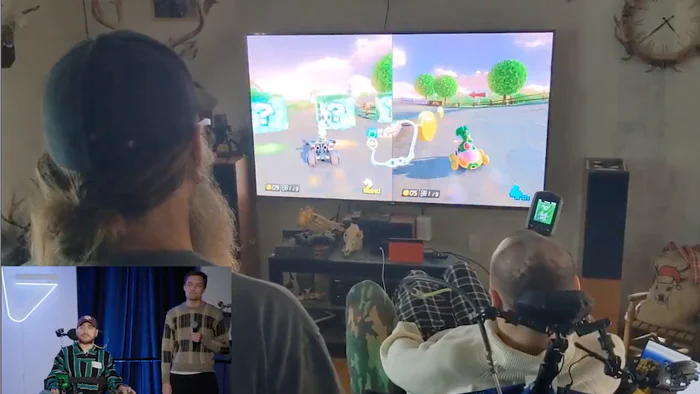
Pesakit pertama yang ditanam dengan cip antara muka otak-komputer Neuralink menunjukkan permainan yang dikawal oleh otak
Neuralink, which employs an invasive method involving flexible electrodes implanted into the brain, achieved a major milestone in January by completing its first human implant. The patient, paralyzed for eight years, regained the ability to control a computer mouse, type, and send emails using only their thoughts.
A Draft Map of All Known Human Cell Types
In November, the Human Cell Atlas project released its first draft map. This “human cell map” details approximately 62 million human cells, covering 18 critical biological systems, including the nervous system, lungs, heart, and immune system.
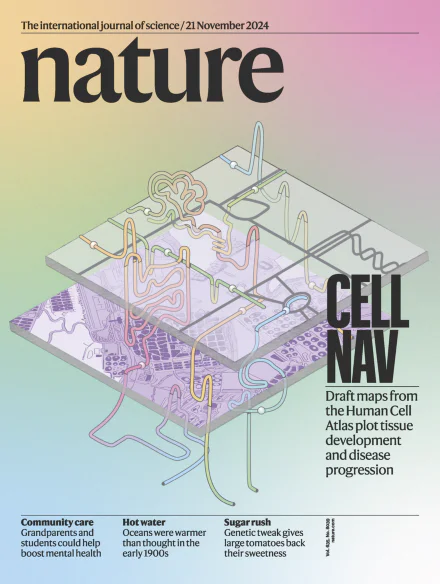
Pada 21 November, terbitan khas Nature menerbitkan lebih daripada 40 hasil projek Atlas Sel Manusia
This milestone builds on research from over 10,000 global volunteers and deep analysis of more than 100 million cells, resulting in 40 major discoveries published in Nature. For example, researchers identified a previously unknown intestinal cell type that could be linked to inflammatory bowel disease.
The Human Cell Atlas is a transformative project akin to the Human Genome Project. By comparing healthy and diseased cells, researchers may discover new therapeutic targets and develop personalized medicine approaches, revolutionizing the understanding of human biology.
Google Willow Chip Breaks Quantum Error Correction Threshold
In December, Google unveiled a quantum chip named Willow, marking a significant breakthrough in quantum computing.
To fully appreciate this achievement, it’s essential to understand a core issue in quantum computing: the fragility of qubits. Qubits are highly sensitive and prone to errors caused by environmental interference, akin to building sandcastles that collapse with the slightest breeze. To address this, scientists have been working to develop effective quantum error correction techniques.
The core technology of the Willow chip lies in its quantum error correction capability. It uses a method called the "surface code," encoding multiple physical qubits into a single logical qubit. This method ensures that even if some qubits encounter errors, the overall computation remains correct. Notably, the Willow chip has surpassed a critical threshold for quantum error correction, meaning that as the number of qubits increases, the error rate decreases exponentially rather than increasing.
This milestone had never been achieved before.
Gene-Edited Pig Organs Successfully Transplanted into Humans
The field of organ transplantation has witnessed a major breakthrough with the successful transplantation of gene-edited pig organs into humans.
Organ transplantation is a treatment for end-stage organ failure. In China, over 300,000 people are on the organ transplant waiting list, but only about 16,000 organs are available each year. To tackle this global challenge, scientists have begun exploring the use of gene editing to modify pig organs, making them suitable for human transplantation.
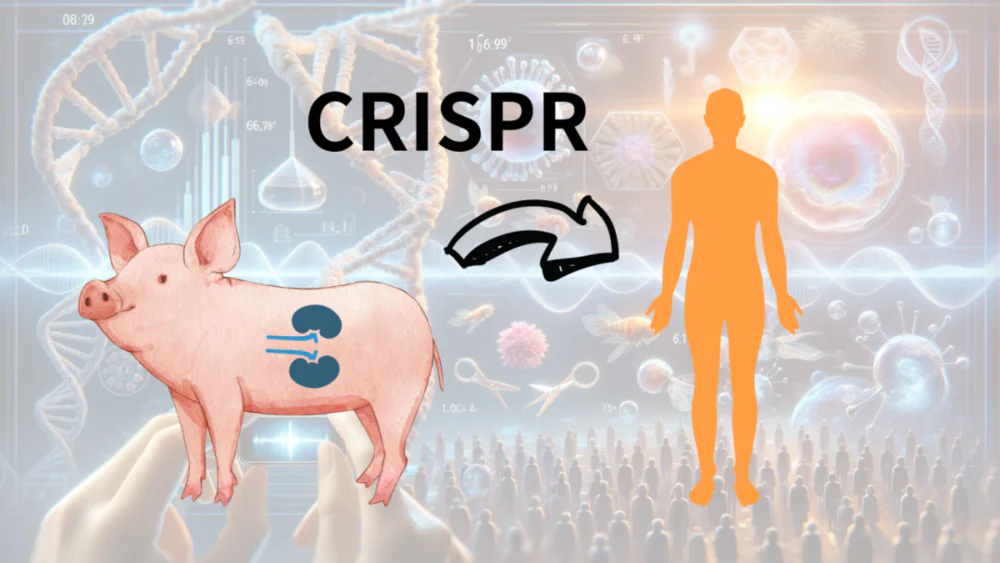
Ginjal babi yang disunting gen berjaya dipindahkan ke dalam manusia
In March, Massachusetts General Hospital in the U.S. announced the first successful transplantation of a pig kidney into a living human. The donor pig was gene-edited using CRISPR-Cas9 technology to remove harmful pig genes, add specific human genes, and inactivate porcine endogenous retroviruses to improve compatibility with human recipients and reduce the risk of transmitting pig viruses. While the recipient ultimately passed away two months later, doctors noted that the death was unrelated to the transplant.
In the same month, researchers at Xijing Hospital of the Air Force Medical University in China performed a kidney transplant from a multi-gene-edited pig to a brain-dead recipient. The donor pig was edited to knock out three genes responsible for hyperacute rejection and incorporate two human genes to regulate complement and coagulation functions. The transplanted kidney functioned well, producing normal urine for 14 days at the time of reporting.
These breakthroughs open new possibilities for addressing organ shortages. With advancements in gene editing and immunology, xenotransplantation could provide hope for more patients awaiting transplants.
Long-Acting HIV Prevention Drug Developed
A long-acting HIV prevention drug has shown remarkable results in clinical trials: a single injection every six months effectively prevents HIV infection.
In June, a large-scale trial in Africa demonstrated the efficacy of a drug called lenacapavir. Among over 2,000 women using the treatment, none contracted HIV, outperforming two control groups taking daily oral medications. Three months later, another trial across four continents confirmed these results, with only two cases of infection among over 2,000 participants, achieving a higher prevention rate than the control group.
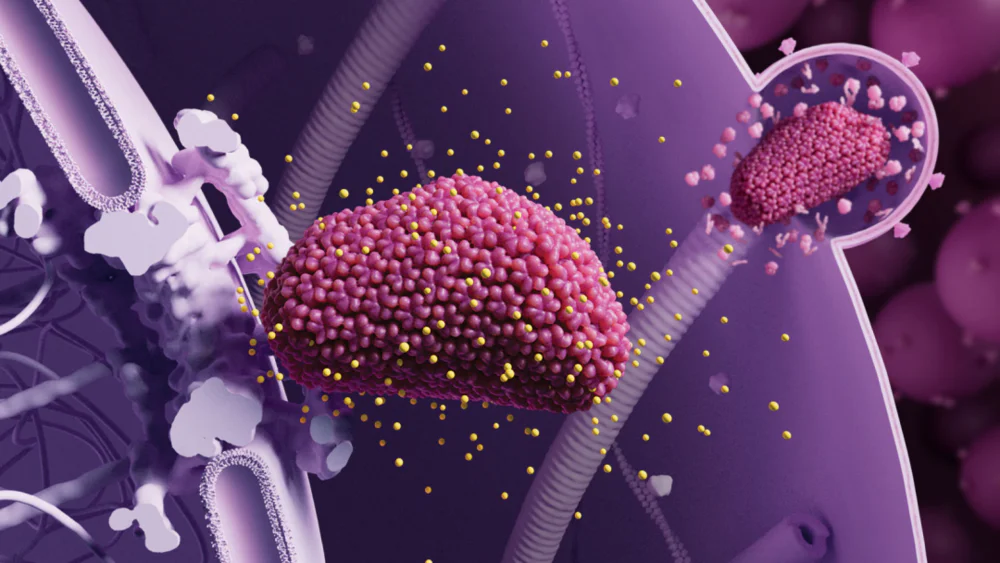
Dadah lenacapavir (kuning) mengikat protein kapsid HIV dan menghalang kon kapsid virus daripada memasuki nukleus sel manusia melalui liang nuklear.
Lenacapavir works through a novel mechanism. Unlike traditional antiretroviral drugs, it targets the virus's capsid protein, preventing its interaction with human cells and blocking its entry into the cell nucleus. Its long-acting formulation enables sustained effectiveness for up to six months.
This breakthrough addresses a critical challenge in HIV prevention. While daily oral medications exist, adherence can be difficult for many. A biannual injection greatly improves convenience and compliance, offering new hope for curbing HIV transmission.
CAR-T Therapy Breakthroughs for Autoimmune Diseases
CAR-T therapy has achieved a significant breakthrough in treating autoimmune diseases.
Originally developed to treat blood cancers, CAR-T therapy involves extracting T cells from a patient’s blood, genetically engineering them to target and destroy cancer cells, and reintroducing them into the patient.
In February, a German research team reported using CAR-T cells to treat autoimmune diseases. Among 15 patients with systemic lupus erythematosus, scleroderma, or myositis, eight achieved drug-free remission after treatment.
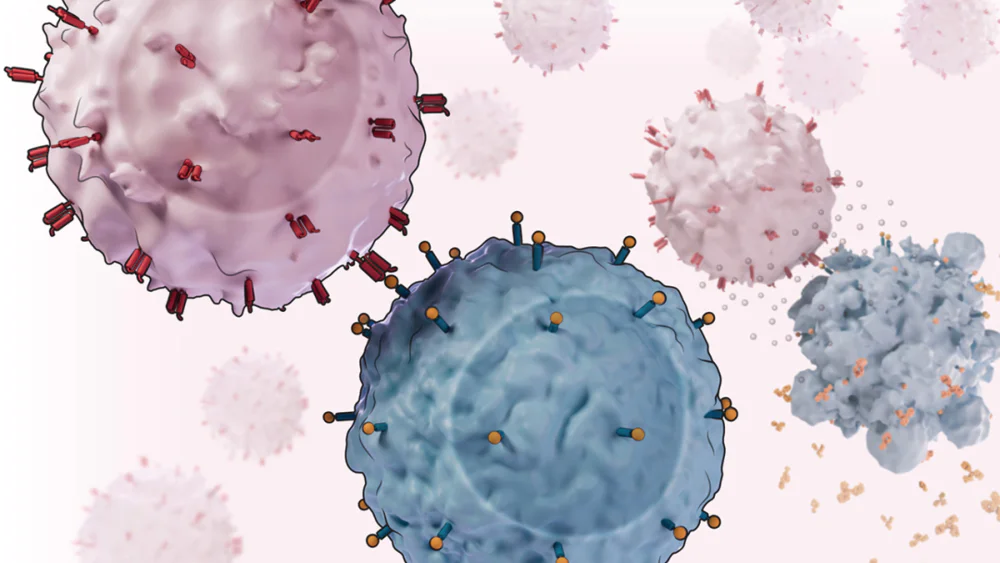
Sel CAR-T (merah jambu) menghampiri dan bersiap untuk memusnahkan sel B. Tahun ini, terapi membuat kemajuan besar dalam merawat penyakit autoimun
In September, a team at China’s Naval Medical University made a groundbreaking advance by using CAR-T cells from donors. The researchers used CRISPR to edit five genes in donor T cells to prevent them from attacking the recipient or being rejected by the recipient’s immune system.
The results were remarkable: one patient with necrotizing myopathy could raise their arms to comb their hair just two weeks after treatment, and two patients with scleroderma showed improvement within days. After six months, all three patients achieved disease remission without severe side effects. The team has since expanded the treatment to over 20 patients.
Using donor cells could enable scalable production of CAR-T therapies, significantly reducing costs and bringing hope to patients with intractable autoimmune diseases.
James Webb Space Telescope Sheds Light on the “Cosmic Dawn”
The James Webb Space Telescope (JWST) continues to revolutionize our understanding of the “cosmic dawn,” the first billion years after the universe’s birth when the first stars and galaxies formed.
JWST’s observations have revealed an unexpected abundance of bright galaxies—nearly 1,000 times more than theoretical models predicted. This discovery challenges existing theories, as the early universe was not expected to host so many luminous galaxies.

Galaksi jauh yang diamati oleh Teleskop Webb, termasuk yang diherotkan oleh kanta graviti yang wujud pada fajar alam semesta hanya 600 juta tahun selepas Big Bang
Analysis of light from these ancient galaxies suggests two possibilities: the presence of massive stars dozens to hundreds of times larger than the Sun or active black holes releasing intense energy by consuming surrounding matter.
Furthermore, these early galaxies contained heavy elements like carbon and oxygen, implying that even earlier massive stars existed and exploded as supernovae, dispersing these elements throughout the cosmos. These findings provide critical clues to how the universe evolved from chaos to its current state.
JWST’s unparalleled capabilities in capturing faint infrared light from the early universe have made these discoveries possible, reshaping our understanding of cosmic origins and evolution.
Final Thoughts
From the depths of the universe to microscopic advancements, science and technology continue to deepen our understanding of the world and improve lives. These breakthroughs address long-standing challenges and open new avenues for future development.
We look forward to more exciting achievements in the coming year.
